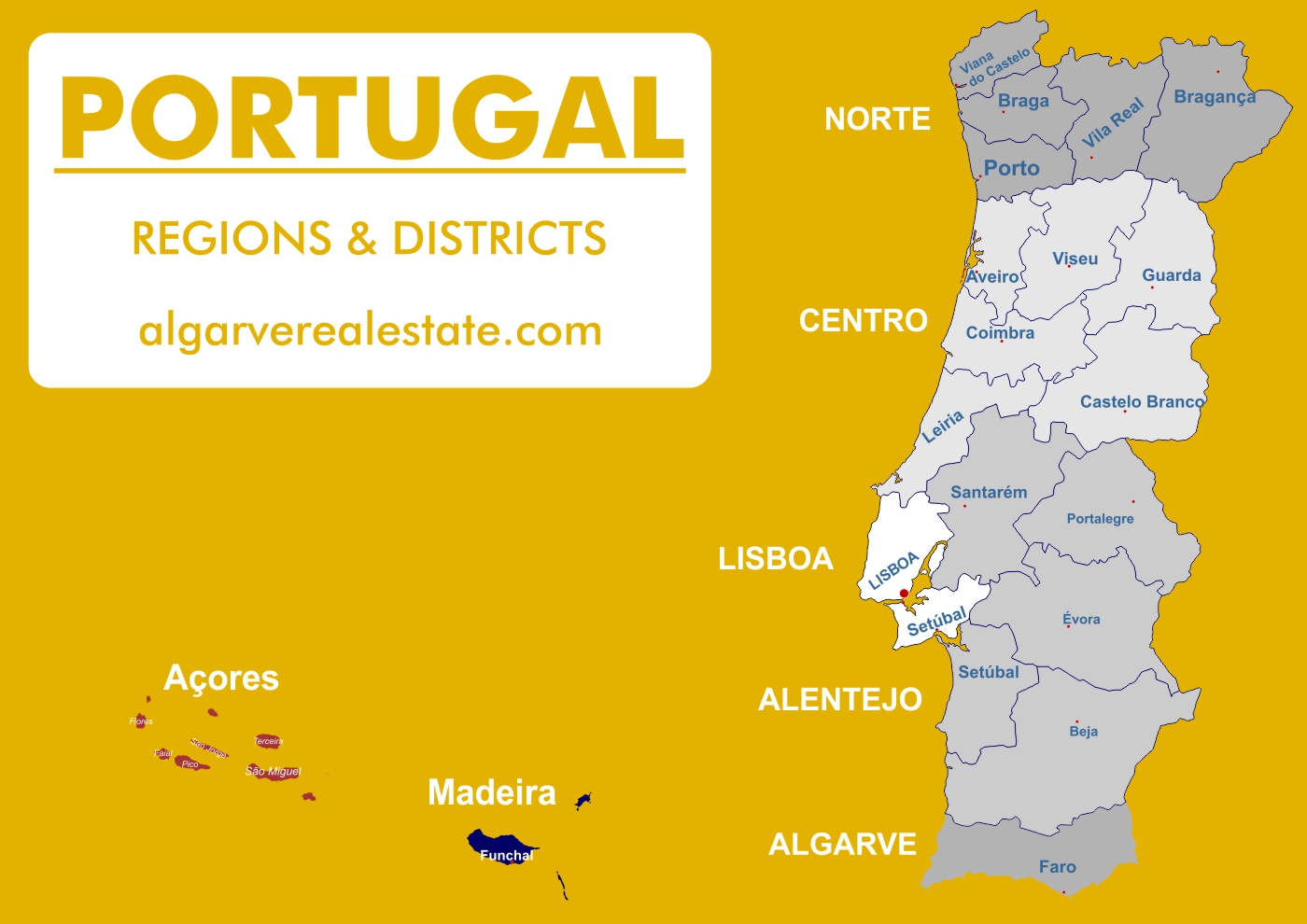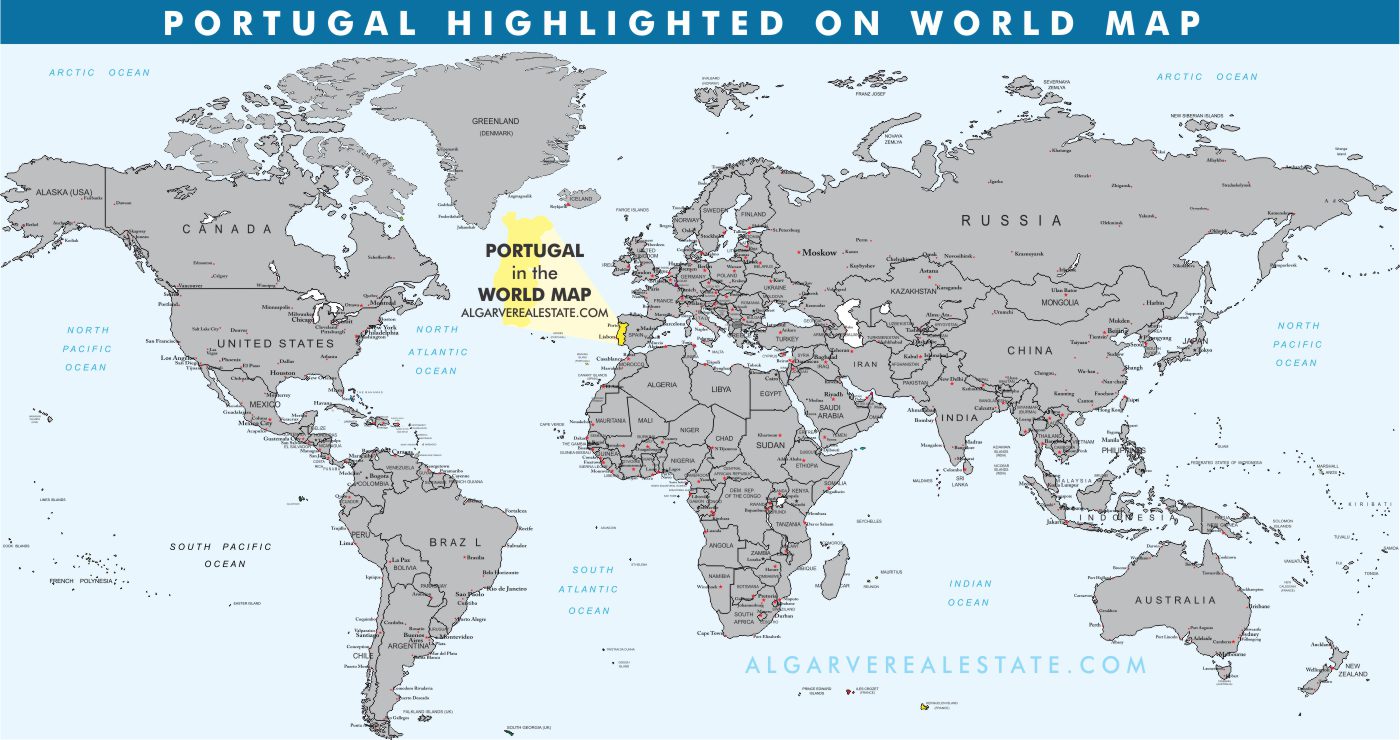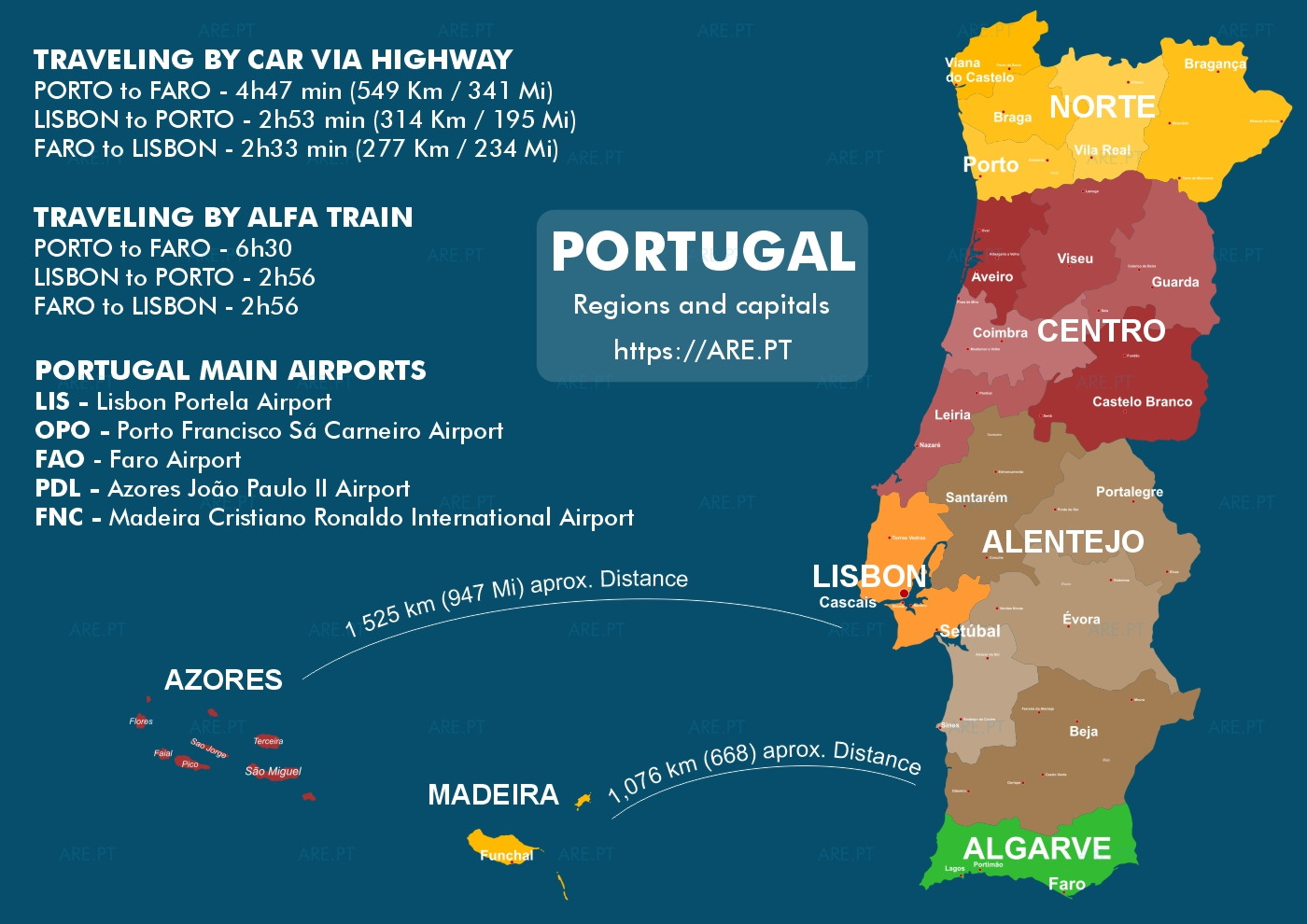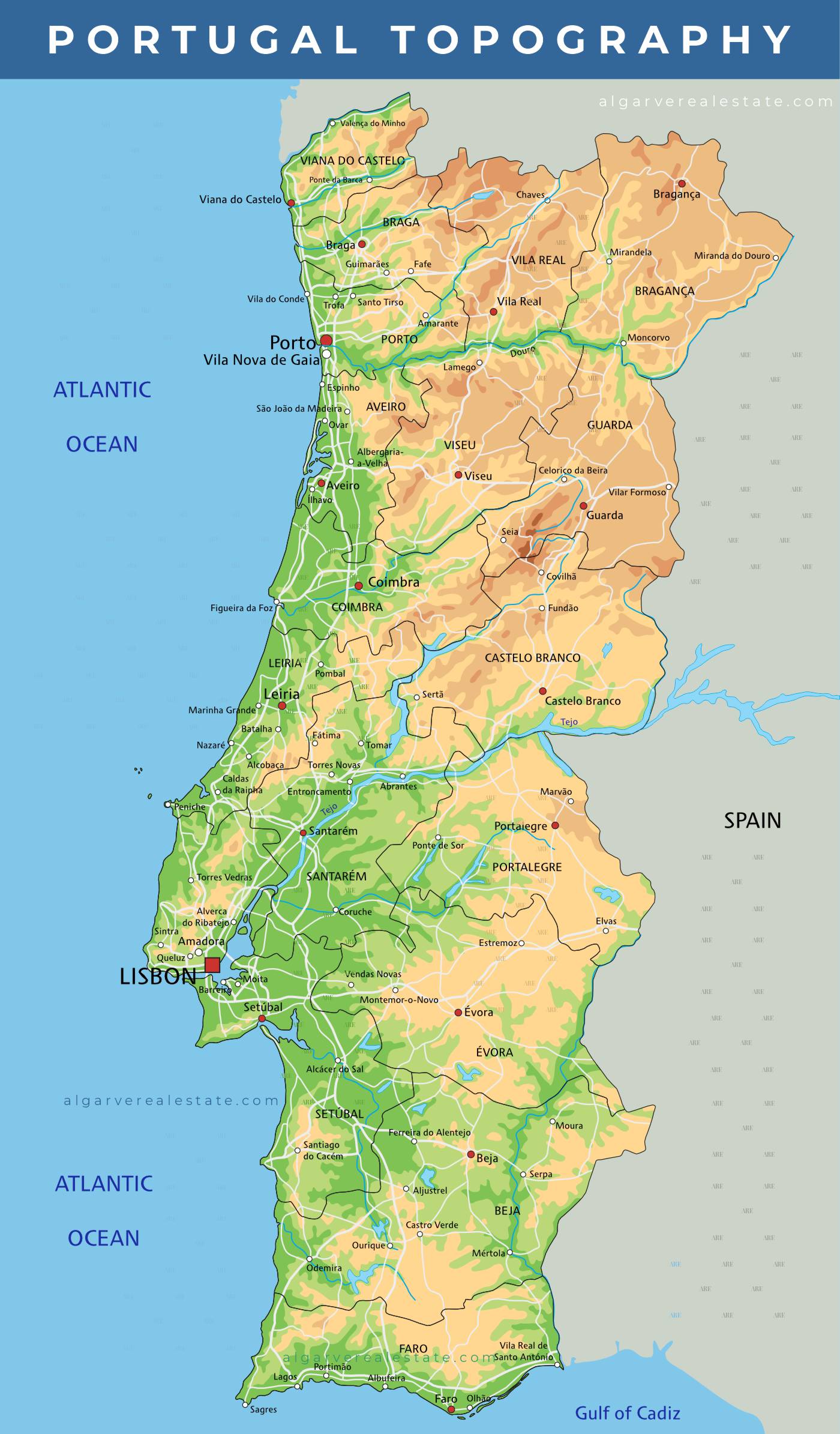UPDATING FOR NEW 2025 VALUES
Each property for sale at Lisbon Property website already have the 2025 IMT tax & Stamp Duty calculated next to Asking Price
… IMT Tax Calculator • for property buyers in Portugal
Free (simple and easy) IMT TAX tool for estimating property taxes in Portugal.
Calculation of the Municipal Tax on Onerous Property Transfers (IMT). Updated values according to the Portugal’s State Budget for 2024
Please select the appropriate options in field 1 and enter the property price in field 2 to calculate the IMT property tax in Portugal
Property tax exception – Law approved on June 20, 2024
To facilitate home ownership for young adults by reducing the financial burden associated with acquiring real estate, the legislation (Lei n.º 30-A/2024) grants the government authority to exempt young people up to 35 years old from municipal property transfer tax (IMT) and stamp duty for their first purchase of a primary and permanent residence, up to a value of
€316,772.
Click to view the decree law in the Portuguese Diário da República
How to use IMT tax calculator, what is it for, and what do those terms mean?
How to use the IMT Tax Calculator by ARE
In option 1, you may choose the location of the intended property to buy, if it is located in Continetal Portugal, or if it is located in the archipelagos of Madeira or Azores.
What are the differences between Portugal Mainland, Madeira, and the Azores Islands in terms of real estate and taxation?
- In Portugal, “Portugal Mainland” refers to the continental part of the country, while “Madeira” and the “Azores Islands” are autonomous regions with distinct tax and legal frameworks. This distinction is significant in real estate and taxation contexts.
In option 2, you may choose the type of use that the property will have, and if it is rural or has other type of urban properties or onerous aquisitions… what does that means?
- A Primary Residence is a property where the owner lives most of the time and has registered it as their main home with the local council. In Portugal, having a property registered as a primary residence can offer tax benefits and may qualify for lower rates on property-related taxes.
- A Secondary residence in Portugal serves multiple purposes: it can be used as a vacation home, a source of rental income, or as an investment to retain within the family or pass on to direct descendants like children, spouse, or parents. The taxation for these properties differs from primary residences, reflecting their varied use and investment potential.
- A Rural property in Portugal is a property primarily used for agricultural purposes like farming or forestry, differs significantly from urban property, which is designated for residential, commercial, or industrial development. Rural properties, typically located in the countryside, are subject to agricultural zoning laws that restrict the construction of residential houses unless they are related to agricultural activities. Urban properties, on the other hand, are situated within city or town limits and are governed by urban zoning laws that permit a wide range of developments. The transformation of a rural property into an urban one is possible but requires changes to local zoning plans, such as the “Planos de Urbanização e de Pormenor,” and involves a complex regulatory process managed by the local council. This transformation is usually part of broader urban development plans and expansion strategies.
- Urban buildings that are not exclusively used for housing, along with other onerous property acquisitions, In Portugal, are subject to a fixed IMT (Imposto Municipal sobre Transmissões Onerosas de Imóveis) rate of 6.5%. Additionally, these transactions incur a Stamp Duty (Imposto de Selo) of 0.8%. This specific tax framework is applied to properties that serve functions beyond residential housing, such as commercial, industrial, or mixed-use buildings, and also to property transactions that involve significant financial or legal burdens.
In Option 3, the price:
- The Property price, as declared in the final purchase deed in Portugal, typically represents the agreed-upon sale price between the buyer and seller. It is this declared value that forms the basis for the one-time taxation by the Portuguese government during the buying process, which includes the IMT (Imposto Municipal sobre Transmissões Onerosas de Imóveis) and the Stamp Duty. These taxes are calculated based on the price stipulated in the purchase deed.
RESULTS of IMT TAX Simulation:
- RESULTS of IMT TAX Simulation: This section, distinguished by the light blue border, will display the calculated results, including the IMT tax to be paid, the Stamp Duty Tax at a fixed rate of 0.8%, and the Total Amount Payable (the sum of IMT and Stamp Duty). These figures represent the additional tax costs that should be factored into your budget.
The IMT Tables
Table 1
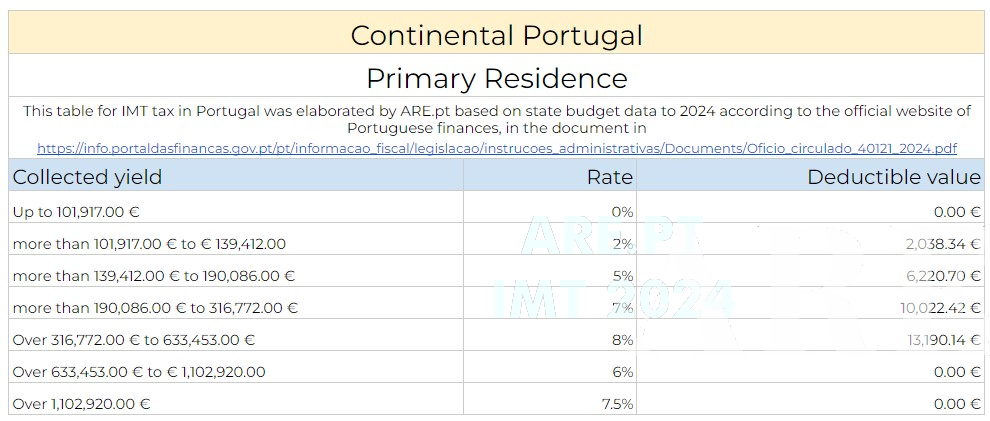
IMT Table for calculating the property acquisition tax in Continental Portugal for primary residences.
Table 2
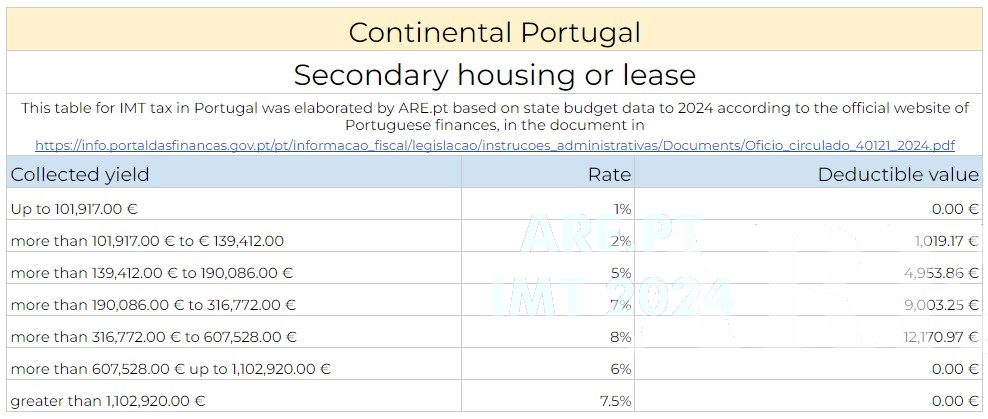
IMT Table for calculating the property acquisition tax in Continental Portugal for properties intended for secondary leasing or rental purposes.
Table 3

IMT Table for calculating the property acquisition tax for rustic buildings, applicable across all of Portugal including the Archipelagos of Madeira and Azores.
Table 4

IMT Table for calculating the property acquisition tax at a fixed rate for urban buildings not exclusively intended for housing, and other onerous acquisitions such as offices, applicable throughout all of Portugal and the Archipelagos of Madeira and Azores.
Table 5
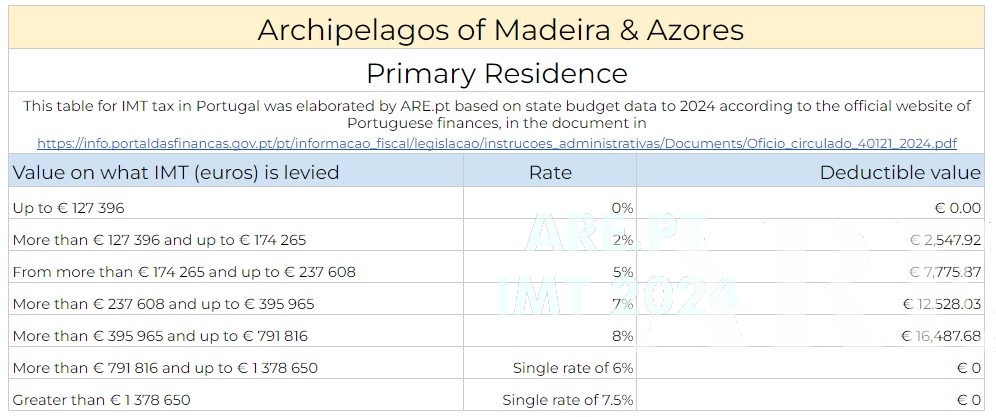
IMT Table for calculating the property acquisition tax in the Archipelagos of Madeira and Azores for primary residences.
Table 6
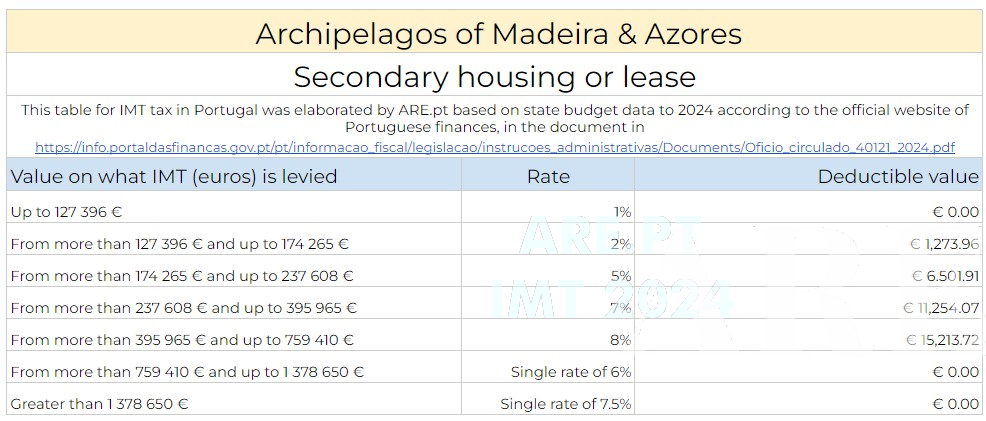
IMT Table for calculating the property acquisition tax in the Archipelagos of Madeira and Azores for secondary and lease properties.
Understanding this IMT tables
- Collected yield, or “Value on which IMT is levied” refers to the price range at which you are purchasing the property, before any taxes are applied. This value serves as the base for calculating the IMT due on the property acquisition.
- “Rate” refers to the percentage applied to the acquisition price of the property to calculate the tax owed. In certain instances, a deductible value may be subtracted from the tax calculated, based on specific criteria or price ranges.
- The “Deductible value” in the context of property taxes, such as IMT (Imposto Municipal sobre Transmissões Onerosas de Imóveis) in Portugal, refers to a specific value that is subtracted from the tax calculated as a percentage of the property’s value. This deduction is based on the property’s price range, as outlined in various tax tables. Essentially, after applying the relevant tax rate to the property’s value, the deductible amount is subtracted from this figure to determine the final tax payable. This mechanism ensures a tiered approach to taxation, where the final tax amount is adjusted based on predefined price brackets.
What is the IMT Tax Calculator by ARE
Our IMT (Imposto Municipal sobre Transmissões Onerosas de Imóveis) tax calculator is designed to help prospective property buyers in Portugal estimate the property transfer tax due when purchasing real estate. It calculates the IMT based on key factors such as the property price, type (e.g., primary or secondary residence), and location (mainland Portugal, Madeira, or Azores).
This tool is invaluable for understanding and preparing for the additional costs involved in property acquisition, beyond just the purchase price. Our calculator utilizes the latest 2024 tax rates and regulations as per Portuguese law, in accordance with the guidelines found at Portuguese Finance Portal.
Please note that the figures provided are estimates meant to give you an idea of your potential final costs. For official calculations and comprehensive legal assistance with the property buying process, we recommend consulting a qualified lawyer.
Need help buying a property in Portugal? Contact us



